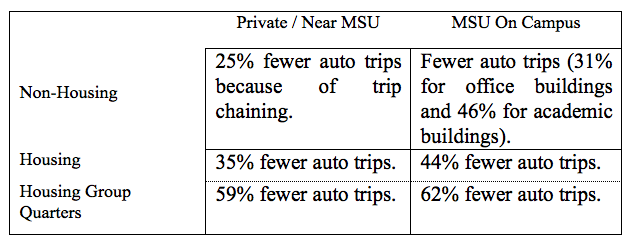When a new development is constructed, a fee can be charged based on the estimated impact to the city facilities and services including water, sewer, fire and street systems. The transportation portion of the impact fee is typically based on an estimate of how much traffic the site generates, and an estimate of the cost of the congestion impact that the new traffic creates. Some cities will allow for special zones to be designated providing a reduction in impact fees for these zones (typically mixed-use urban village developments). The purpose of this study was to determine the feasibility of creating such a district around a university and measuring how travel to and from a university is different from other types of developments. Using Montana State University (MSU) as a case study, the research showed that such a designation is appropriate. Further the study estimated the difference in traffic generated by developments in and around MSU. The study found that when auto trips were made to and from MSU, they were on average the same length as travel in other areas of the city. 
However, the number of auto trips generated was significantly less. The estimated reduction in auto trips is shown in the table by development type.
The purpose of this study was to determine the feasibility of creating a district around Montana State University in order to measure how travel to and from a university is different from travel to and from other types of development.
PERSONNEL:
REPORTS & DOCUMENTS:
RELATED WORK:
© 2024 Western Transportation Institute – all rights reserved. PO Box 174250, Bozeman, MT 59717